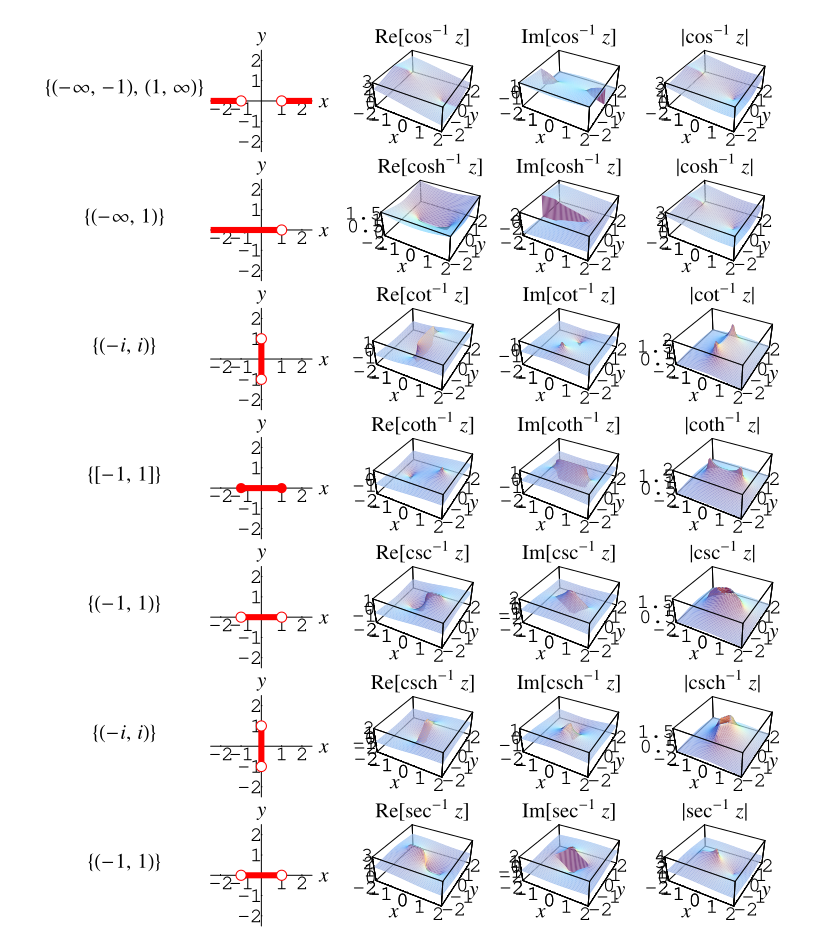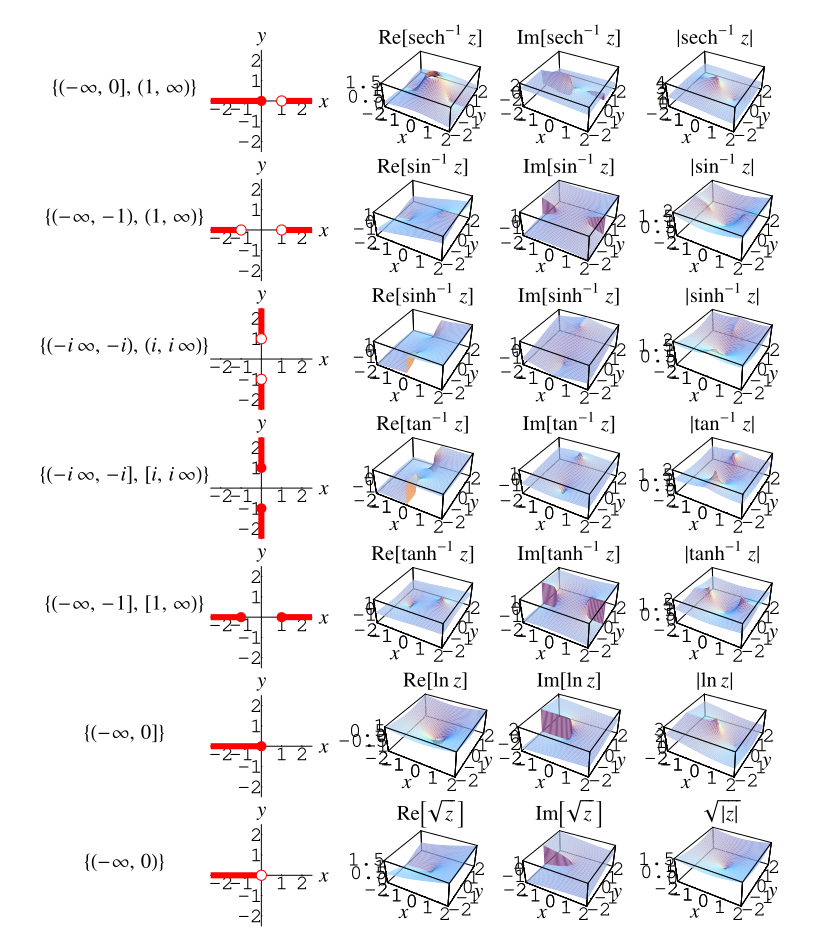A branch cut is a curve (with ends possibly open, closed, or half-open) in the complex plane across which an analytic multivalued function is discontinuous. For convenience, branch cuts are often taken as lines or line segments. Branch cuts (even those consisting of curves) are also known as cut lines (Arfken 1985, p. 397), slits (Kahan 1987), or branch lines.
For example, consider the function which maps each complex number
to a well-defined number
. Its inverse function
, on the other hand, maps, for
example, the value
to
. While a unique principal
value can be chosen for such functions (in this case, the principal
square root is the positive one), the choices cannot be made continuous over
the whole complex plane. Instead, lines of discontinuity
must occur. The most common approach for dealing with these discontinuities is the
adoption of so-called branch cuts. In general, branch cuts are not unique, but are
instead chosen by convention to give simple analytic properties (Kahan 1987). Some
functions have a relatively simple branch cut structure, while branch cuts for other
functions are extremely complicated.
An alternative to branch cuts for representing multivalued functions is the use of Riemann surfaces.
In addition to branch cuts, singularities known as branch points also exist. It should be noted, however, that the endpoints of branch cuts are not necessarily branch points.
Branch cuts do not arise for the single-valued trigonometric, hyperbolic, integer power, and exponential functions. However, their multivalued inverses do require branch cuts. The plots and table below summarize the branch cut structure of inverse trigonometric, inverse hyperbolic, noninteger power, and logarithmic functions adopted in the Wolfram Language.


| function name | function | branch cut(s) |
| inverse cosecant | ||
| inverse cosine | ||
| inverse cotangent | ||
| inverse hyperbolic cosecant | ||
| inverse hyperbolic cosine | ||
| inverse hyperbolic cotangent | ||
| inverse hyperbolic secant | ||
| inverse hyperbolic sine | ||
| inverse hyperbolic tangent | ||
| inverse secant | ||
| inverse sine | ||
| inverse tangent | ||
| natural logarithm | ||
| power | ||
| square root |